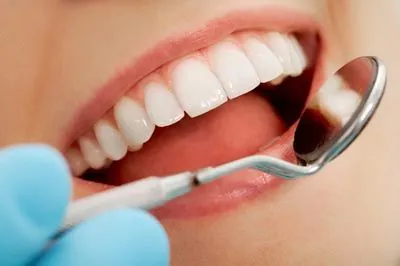At Radiant Dentistry of Woburn, Dr. Oliver Austria provides a range of oral surgery procedures to address complex dental needs, ensuring your comfort and optimal oral health. While the term "oral surgery" might sound intimidating, these procedures are often essential for resolving issues that cannot be treated with general dentistry alone. Dr. Austria's expertise, combined with our advanced technology and compassionate approach, means you're in skilled hands for procedures to revive the complete health and appearance of your smile. We prioritize clear communication and seamless, stress-free care throughout any procedure, and we'll provide detailed pre- and post-operative instructions to support your healing process.
Our top surgical procedures at Radiant Dentistry of Woburn include:
Tooth Extractions

Wisdom Teeth Extraction (Partial-Bony)
At Radiant Dentistry of Woburn, Dr. Oliver Austria and his team understand that wisdom teeth extraction is a common and often necessary procedure to protect your overall oral health. Wisdom teeth, or third molars, are the last teeth to emerge, usually between the ages of 17 and 25. Often, there isn't enough room in the jaw for these teeth to erupt properly, leading to a condition called impaction. When wisdom teeth are impacted or cause problems, extraction is typically recommended to prevent further complications.
Dr. Austria will then carefully make a small incision in your gum to access the tooth and any surrounding bone. For partial-bony impactions, a small amount of bone covering the tooth may need to be gently removed to create a clear path. Sometimes, the tooth itself might be divided into smaller, manageable pieces to allow for an easier and less traumatic removal. Once fully accessible, the tooth is gently and carefully extracted. Finally, the gum tissue is typically closed with dissolvable sutures to help with the healing process.
As wisdom teeth attempt to emerge, they can cause crowding and misalignment by pushing on existing teeth, potentially undoing previous orthodontic work. Infection and decay are significant concerns, as partially erupted wisdom teeth are incredibly difficult to clean, making them highly susceptible to trapping food, building up bacteria, and developing severe decay or gum infections. In rarer cases, cysts or tumors can also form around impacted wisdom teeth.
Surgery for Partial Bony Impacted Wisdom Teeth
The complexity of the wisdom tooth extraction depends on the position and impaction of the tooth. Dr. Austria will use advanced imaging, like 3D digital X-rays, to get a precise view of your wisdom teeth and plan the safest, most effective approach.
A common type of impaction is a partial-bony impaction. This occurs when a portion of the wisdom tooth has broken through the gum line, but a significant part of the tooth is still embedded within the jawbone. Dr. Austria will then carefully make a small incision in your gum to access the tooth and any surrounding bone. For partial-bony impactions, a small amount of bone covering the tooth may need to be gently removed to create a clear path. Once fully accessible, the tooth is gently and carefully extracted. Finally, the gum tissue is typically closed with dissolvable sutures to help with the healing process.
Dr. Austria and his team will provide detailed post-operative instructions to ensure a smooth and comfortable recovery every step of the way! If you suspect you or your teen may need to undergo wisdom teeth removal in Woburn, learn more today by scheduling a surgical consultation.
Root Canals

After a successful root canal, Dr. Austria will typically recommend placing a dental crown over the treated tooth for enhanced strength and longevity. The dental crown restoration provides essential protection, restoring the tooth's strength, function, and appearance, allowing it to withstand the forces of biting and chewing for many years. Saving your natural tooth with a root canal is almost always the preferred option over a dental extraction because it helps maintain your natural bite, prevents adjacent teeth from shifting, and avoids the need for a bridge or implant. We use the latest treatment techniques and technologies to ensure your root canal experience is as efficient and comfortable as possible!
Gingivectomies
Looking for a way to achieve healthier gums and a more attractive smile? At Radiant Dentistry of Woburn, Dr. Austria offers gingivectomies to do just that! This procedure is all about precisely removing any excess or overgrown gum tissue. A gingivectomy is often recommended to address gum disease (periodontitis), especially when deep pockets form between your teeth and gums, becoming little hideouts for harmful bacteria. By carefully removing unhealthy tissue and making those pockets shallower, a gingivectomy helps remove the infection. This also makes it way easier for you to keep your teeth and gums clean at home, stopping gum disease from getting worse and potentially saving your teeth.
Benefits of a gingivectomy are not just about health – if you feel that too much gum tissue covers your teeth, a gingivectomy can reshape your gum line. This reveals more of your natural tooth, creating a much more balanced and beautiful smile. Dr. Austria will chat with you about whether a traditional method or a gentler laser approach is best for your specific needs, ensuring a smooth recovery and results you'll love.
Crown Lengthening

Crown lengthening surgery might be essential if a tooth has fractured below the gum line, developed extensive decay, or needs a new crown but isn't tall enough for proper support. By gently exposing more of your natural tooth structure, we can create a stronger, healthier foundation for restorative work, and make the tooth easier to clean, helping to prevent future oral health concerns.
As a cosmetic procedure, crown lengthening can correct what's often called a "gummy smile"— where the teeth appear short or uneven due to too much gum tissue. Crown lengthening can dramatically improve your smile's balance and appearance by revealing more of your natural tooth.
Top Oral Surgeries for Healthy, Radiant Smiles
If you need oral surgery in Woburn, don't hesitate to seek expert care from Dr. Austria and his team. Contact Radiant Dentistry of Woburn today to schedule your consultation and discover the best path forward for your healthiest teeth and gums!
